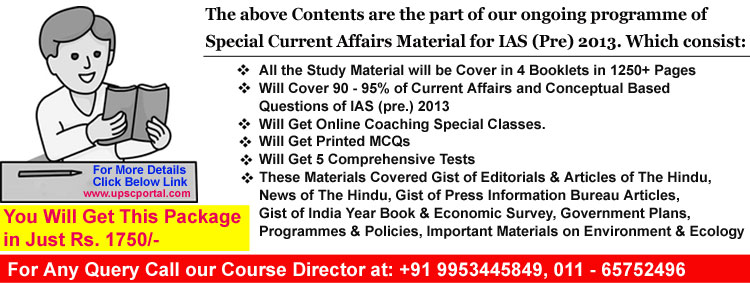(HOT) UPSC Current Affairs 2025 PDF
NEW! The Gist (NOV-2025) | E-BOOKS
(IGP) Special Current Affairs Material for IAS (Pre) 2013 - PIB "Topic:Empowering The Adolescent Girls - SABLA"
(IGP) Special Current Affairs Material for IAS (Pre) 2013
Chapter: Gist of Press Information Bureau Articles
Topic: Empowering The Adolescent Girls – SABLA
Q. Why ‘Adolescence’ phase is called crucial?
The world is home to 1.2 billion individuals aged 10-19 years generally known as the phase of ‘Adolescence’. Adolescence is a phase during which major physical and psychological changes take place in children, along with changes in their social perceptions and expectations. Adolescence is also the stage when young people extend their relationships beyond parents and family and are intensely influenced by their peers and the outside world. They are also the years of experimentation and risk taking, of giving in to negative peer pressure, of taking uninformed decisions on crucial issues, the vast majority of adolescents live in developing countries and India has the largest national population of adolescents.Q. Which types of other workers also have been covered under Rashtriya Swasthya Bima Yojana?
Q. What are the data about Adolescence in India?
- The Adolescent girls in the 10–19 years constitute almost 47 per cent of the total population of Adolescents in the country. But their development is fraught with varied problems.
-
Almost 50% of women marry before the legal age of 18 versus 10% of young men.
- Overall, one in six women in age group of 15-19 has begun childbearing. Early childbearing is most common in rural areas and among women with no education. Around 41% of all maternal deaths take place among those aged 15-24. 56% adolescent girls are anemic (verses 30% adolescent boys).
- The drop-out rates among the girls are quite high. 21% adolescent girls and 8% adolescent boys have no education. Dropout rates among girls are high largely due to distance from schools, male teachers, sanitation facilities at school, early marriage and early assumption of domestic responsibilities etc.
Q. What are the main features of ‘SABLA’?
- Rajiv Gandhi Scheme for Empowerment of Adolescent Girls – Sabla has been launched as a comprehensive intervention for Adolescent girls in the age-group of 11-18, with a focus on out of school girls. To begin with, the Scheme is being implemented in 200 districts of the country on a pilot basis.
-
Sabla aims at all-round development of adolescent girls of 11-18 years (with a focus on all out-of-school AGs) by making them ‘self reliant’.
-
At the Anganwadi Center, supplementary nutrition providing 600 Kcal and 18-20 g of protein and micronutrients is provided every day at the Anganwadi centers either as hot cooked meal or as take home rations to out of school adolescent girls in 11-14 years and all girls between 14-18 years for 300 days in a year.
-
In addition, out of school adolescent girls are being provided non- nutrition services which include life skills education, supervised weekly IFA (100 mg of elemental iron and 0.5 mg of folic acid) supplementation and nutrition counseling, sexual and reproductive health education and counseling, skills in leadership, problem solving, decision making and accessing public services.
- In addition, older adolescent girls (16 - 18 year olds) are being given vocational training to make them self reliant.
- Adolescent girls have been organized in groups called Kishori Samoohs. Each Samooh is led by a peer leader (Kishori Sakhi) and meet at least 5-6 hours a week to receive programme services and function as a peer support group. Every girl enrolled in Sabla are given a Kishori Card, an entitlement tool to monitor girls’ access to and uptake of the services under Sabla.Q. What are the main features of government’s Skill Development Initiative (SDI) Scheme?
 Go
Back To Main Page
Go
Back To Main Page

